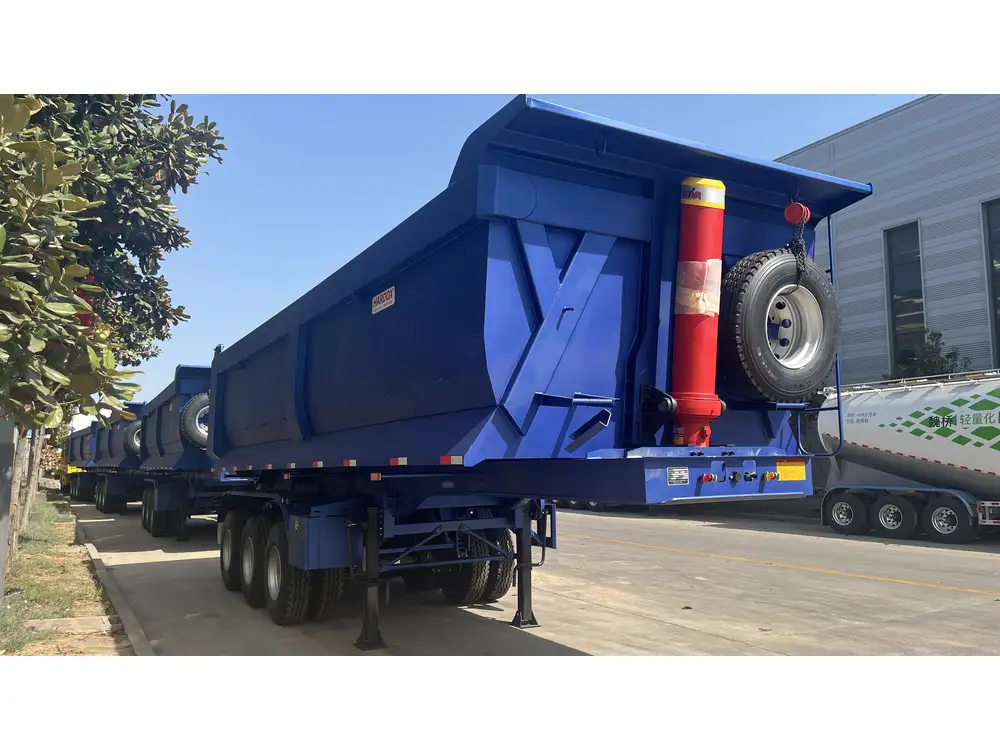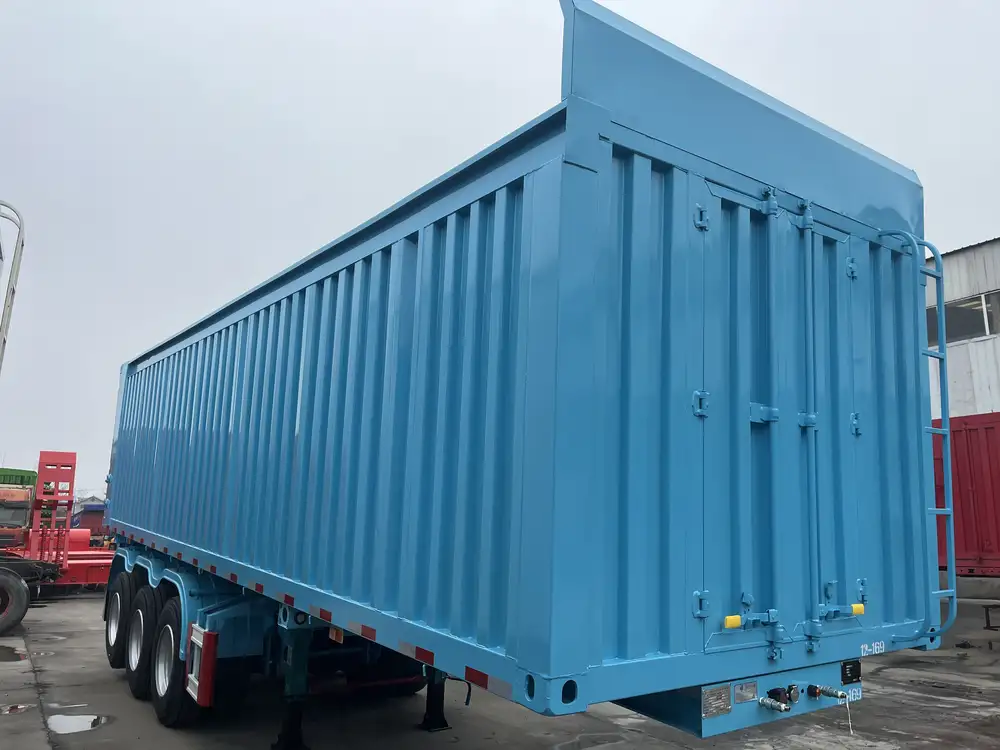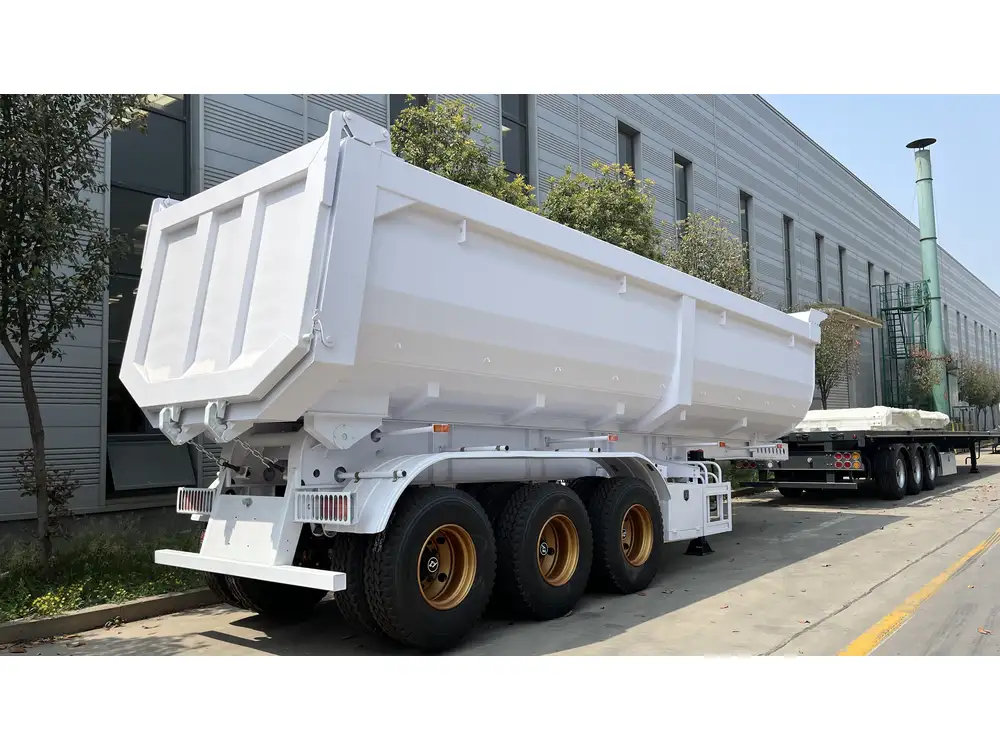When it comes to the world of heavy-duty transportation, double axle dump trailers play a critical role in multiple industries, from construction and agriculture to landscaping and waste management. However, understanding the nuances of these robust vehicles, including their weight, is paramount for anyone involved in logistics or operations. In this article, we will delve deeply into the factors influencing the weight of double axle dump trailers, helping you grasp the essential information needed for safe and efficient operation.
What is a Double Axle Dump Trailer?
A double axle dump trailer is a specialized vehicle designed to transport and unload various materials, such as sand, gravel, and debris. It features two axles, which distribute the weight of the load more evenly than single axle trailers, enhancing stability and load capacity. Typically, these trailers are equipped with hydraulic systems that enable the dumping mechanism, allowing for quick and efficient unloading.
Factors Influencing the Weight of a Double Axle Dump Trailer
Understanding the weight of a double axle dump trailer involves examining several key factors:

1. Construction Materials
The materials used in crafting a double axle dump trailer have a significant impact on its weight. Common materials include:
| Material | Weight Characteristics |
|---|---|
| Steel | Heavy and durable |
| Aluminum | Lightweight but costly |
| Composite Materials | Varying weight |
Key Insight: Aluminum trailers may offer weight savings compared to steel but often come at a higher price point.
2. Dimensions
The overall dimensions of the trailer—including length, width, and height—are crucial in determining weight. Common configurations include:
- Length: Typically ranges from 10 to 20 feet
- Width: Standard widths are around 6 to 8 feet
- Height: Varies based on design but often is around 2 to 4 feet for the bed
Analysis: A longer trailer may weigh more due to increased material usage, but it can also provide greater payload capacity.
3. Axle Type and Configuration
The choice of axles also contributes to the weight of the trailer. Double axle trailers can be:
- Tandem Axles: Two axles placed close together, which can bear heavier loads.
- Spread Axles: Two axles spaced farther apart, allowing for greater distribution of weight and improved stability.
Comparison:
| Axle Type | Weight Distribution | Stability | Typical Uses |
|---|---|---|---|
| Tandem | Concentrated | Moderate | Heavy-duty transport |
| Spread | Distributed | High | Stability in rough terrain |

4. Payload Capacity
It’s essential to note that the weight of the trailer itself plus the payload must not exceed the vehicle’s Gross Vehicle Weight Rating (GVWR). Typical payload capacities for double axle dump trailers can range from:
- 10,000 lbs (4,536 kg) for lighter models
- 20,000 lbs (9,072 kg) or more for high-capacity versions
Important Note: Overloading can lead to increased wear and tear and potential legal issues.
5. Manufacturer Specifications
Each manufacturer may provide distinct specifications and design features for their trailers:
- Design Variability: Custom-built trailers can have variations in weight due to additional features.
- Brand Differences: Weight ratings and build quality can differ significantly from one brand to another.
Typical Weight Range of Double Axle Dump Trailers
On average, double axle dump trailers weigh between 3,000 lbs (1,361 kg) and 8,000 lbs (3,628 kg) when empty. A significant factor to consider is that the weight can fluctuate based on the aforementioned elements, causing variances even among the same class of trailers.

Example Weights:
| Trailer Type | Empty Weight (lbs) | Payload Capacity (lbs) |
|---|---|---|
| 10 ft Steel Dump Trailer | 3,500 | 7,500 |
| 14 ft Aluminum Dump Trailer | 5,000 | 15,000 |
| 16 ft Heavy-Duty Dump Trailer | 7,000 | 13,000 |
Regulations Governing Trailer Weights
Understanding the legal framework surrounding trailer weights is crucial for compliance and safety. Each state in the U.S. has its own regulations concerning:
- Maximum trailer weights
- Axle weight distribution limits
- Registration requirements
Federal Guidelines
According to the Federal Highway Administration (FHWA), the maximum GVWR for a two-axle trailer is generally 34,000 lbs (15,422 kg). It is essential for trailer operators to be aware of both federal and state regulations to avoid potential fines and safety hazards.

Safety Considerations for Operating Double Axle Dump Trailers
Operating double axle dump trailers safely requires an understanding of handling characteristics, load distribution, and braking systems.
1. Load Balancing
To ensure stability and adequate braking performance, it’s critical that loads are distributed evenly across the trailer axles. Overloading one side can lead to dangerous handling issues.
2. Braking Systems
Double axle dump trailers often come equipped with electric or hydraulic brakes, which are essential for managing the significant weight being towed. Understanding how your braking system works can prevent accidents and ensure safe operation.

3. Routine Maintenance Checks
Regular inspections can help maintain the integrity of the trailer. Key maintenance areas include:
- Tires: Check for proper inflation and tread wear.
- Braking System: Ensure that brakes are functioning correctly and are well-adjusted.
- Load Bearing Components: Inspect for cracks or signs of wear regularly.
Common Uses of Double Axle Dump Trailers
Double axle dump trailers are versatile, serving multiple industries and purposes:
- Construction Sites: Ideal for transporting gravel, sand, and debris.
- Landscaping Firms: Used for hauling soil, mulch, and rocks.
- Agricultural Applications: Transporting feed, fertilizers, and tools.
- Waste Management: Moving debris from clean-up sites to disposal facilities.
Visual Representation:
| Industry | Typical Usage |
|---|---|
| Construction | Hauling materials and debris |
| Landscaping | Transporting soil and mulch |
| Agriculture | Moving agricultural products |
| Waste Management | Collecting and transporting trash |
Conclusion: The Importance of Understanding Trailer Weight
Grasping the weight dynamics of double axle dump trailers is essential for industry professionals, fleet operators, and anyone involved in heavy transport. Armed with knowledge about the weight distribution, payload capacities, and safety regulations, operators can make informed decisions regarding usage, maintenance, and compliance, ensuring operational efficiency along with reduced legal risks.
It’s not merely about hauling; it’s about doing so responsibly and effectively. As you equip yourself with this fundamental knowledge, you’re not just prepared; you’re poised for success in the competitive and fast-paced world of logistics and transportation. Our commitment to quality manufacturing ensures that our double axle dump trailers will meet and exceed your expectations, delivering unmatched performance and reliability on every job site.



